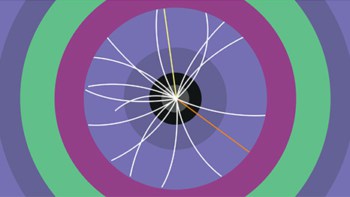
The chart of the known nuclides has been extended significantly by physicists in Japan, who have discovered 45 new neutron-rich isotopes. The nuclei were spotted at the RIKEN laboratory by smashing a powerful beam of heavy ions into beryllium and lead targets.
The researchers say that the 45 are just a taste of what is to come, with technical improvements expected to lead to the production of thousands of new radioisotopes that should tell us more about the astrophysical processes responsible for the creation of atoms and also lead to advances in medical technology.
Radioisotopes are unstable chemical elements that have more or fewer neutrons than the stable forms of these elements. Physicists have been producing them using particle accelerators since the 1980s, but a new generation of radioactive beam facilities will hugely extend the number of known radioisotopes. Measurements of properties such as the lifetimes and masses of these nuclei will improve our understanding of the structure and origin of atomic nuclei.
Separated by BigRIPS
The $0.5bn Radioactive Isotope Beam Factory (RIBF) at the RIKEN Nishina Center for Accelerator-Based Science near Tokyo is the first such facility to start operating. It uses a series of cyclotrons to accelerate beams of nuclei of any element up to uranium and then collides these nuclei with the nuclei of beryllium or lead. Fission or fragmentation reactions lead to the production of a range of neutron-rich unstable nuclei, which are then collected, separated and analysed using a superconducting instrument known as BigRIPS.
Shortly after switching on the facility in 2007, Toshiyuki Kubo and colleagues from RIKEN and other labs around the world discovered two new isotopes of palladium using a beam of uranium-238. At that stage, however, the experiment was limited by the relatively low intensity of the beam, because more neutron-rich isotopes are harder to create and require a much greater collision rate. By fine-tuning the cyclotrons, the Nishina Center’s accelerator team was able to increase the intensity by a factor of 50, leading to a second experiment carried out over four days in November 2008.
For the last year and a half Kubo and co-workers have been carefully analysing the collision data from that experiment, sifting out the few events attributable to new exotic nuclei from the far larger numbers of more ordinary nuclei that were produced. Among the 45 new radioisotopes that they identified were palladium-128, which is of interest because it plays an important role in the astrophysical creation of chemical elements heavier than iron and because it has a “magic” number of neutrons (82), rendering it more stable than nuclei with slightly more or fewer neutrons. Likewise, nickel-79, which was also discovered, has a neutron number of 51, putting it just one above the neutron magic number of 50 and making it an important isotope for tests of the nuclear shell model.
Beam intensity boost needed
Similar heavy-ion facilities are also being developed in Europe and the US – the FAIR project at the GSI lab in Darmstadt, Germany, and the FRIB at Michigan State University. But these machines will not be completed for several years and so for the moment will leave the field open to the RIBF (even if FAIR, when it does start up, will probe a broader range of physics, including atomic physics, plasma physics and hadron physics). “The big advantage the Japanese have is that the machine is there now,” says Bill Gelletly, a nuclear physicist at the University of Surrey. “The drawback is that they are quite slow to get the beam intensities up to the advertised levels. This limits the experiments.”
Kubo acknowledges that he and his colleagues “have just started the research process”. He says that the next step is to measure the lifetimes (expected to be of the order of a few tenths or hundredths of a second), decay properties, reactions and masses of the newly-created isotopes as well as discovering vast numbers of other new species. In addition to improving our understanding of nuclear physics, astrophysics and materials science, Kubo points out that the development of the new accelerators, targets and ion sources will lead to improvements in the production of radioisotopes for medical use and should, he says, also enhance cancer therapy using ion beams.
The work is described in arXiv: 1006.0305.



